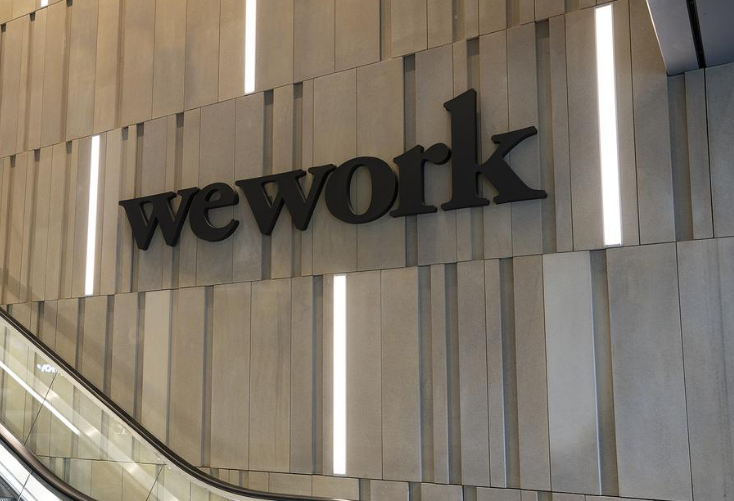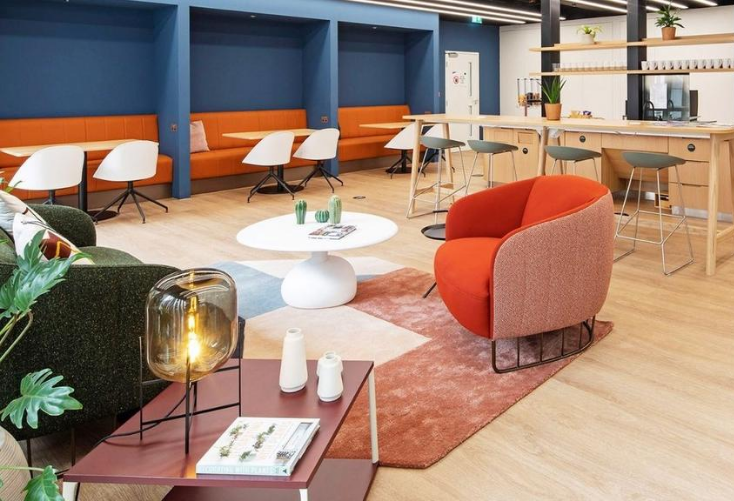Hand selected flexible workspace news from the most reliable sources to keep you ahead of the pack. We find all the latest news, so you don’t have to. Morning and afternoon updates. Stay in the know.
Here’s what you need to know today:
- WeWork Launches On Demand Workspace Program NEW
- Japanese Starbucks Offers Coworking Opportunities NEW
- The Evolution Of The Future Of Work NEW
- IWG Remains Optimistic About Suburban Offices
- Commercial Real Estate Firms Look To Flexible Solutions
- Adapting To New Office Design Needs
WeWork Launches On Demand Workspace Program
WeWork has launched a new pay-as-you-go program that allows members and non-members to use a workspace for as little or as much as they need.
According to a source, the company will pilot the On Demand initiative for the next 60 days in New York City as companies slowly reopen their doors and demand grows for another place to work outside of homes or traditional offices.
On Demand will be available at 12 locations in Manhattan and Brooklyn, where users can book a workspace for $29 per day or a meeting space for $10 an hour.
This is not the first time WeWork has offered hourly workspaces. The company launched WeWork Now in January 2019, but the location closed in May as WeWork divested many of its non-core businesses.
Overall, many flexible office operators have helped companies bring their employees back into the office by offering more locations outside of major metro areas.

Japanese Starbucks Offers Coworking Opportunities
A new two-story Japanese Starbucks located in Ginza has opened its doors and offers coworking services.
The cafe was built in collaboration with ThinkLab and features its own shared office and coworking space within the Circles Ginza building.
The space includes individual working booths for solo work, as well as tables that can be reserved for meetings and collaboration.
On the first floor is a traditional Starbucks where you can order coffee and food. The second floor is home to the Smart Lounge that features a working environment with natural light, sofas, collaboration opportunities and more.

The Evolution Of The Future Of Work
A survey of Fortune 500 CEOs found that 26% of respondents said they do not expect having over 90% of their workforce working from the office ever again.
This is a sentiment shared by companies large and small. Now that organizations have had the experience in operating remotely, it is clear that many will continue to do so efficiently.
Companies are reconsidering their next move, and that includes changing the way in where and how we engage with our colleagues. This means focusing on altering traditional workplace culture, recruitment strategies, management and leadership to meet evolving needs of the workforce.
Corporate culture can be particularly hard to maintain when working remotely. But companies that made an effort to support and nurture employees at the start of these challenging times got a great head start.
However, supporting culture also means engaging with employees in casual ways that can be hard to replicate virtually. Without a quick chat in the hallways, employers need to ensure that workers are still staying connected through virtual happy hours and other methods.
Additionally, the future of work may also experience a demographic shift. Companies that continue to utilize remote capabilities can now expand their recruitment beyond their own city, thus diversifying their workforce and creating more opportunities for marginalized communities.

IWG Remains Optimistic About Suburban Offices
IWG remains optimistic about the future of the serviced office industry despite taking a £156 million hit recently due to shutdowns.
The company will cut 130 of its 3000 sites due to them being less profitable at a cost of £126.7 million, while also taking another £29.1 million charge for anticipated credit losses, transaction costs for delayed deals, restructuring and more.
Now, the company maintains that it will be able to grow its network by serving suburban areas as more people seek to work closer to their home. Currently, the firm has a few locations in London suburbs such as Hemel Hempstead and Hayes.
“More companies will have distributed workforces with more satellite offices, more employees working closer to home or continuing to work from home,” said Mark Dixon, CEO of IWG. “With our decentralised portfolio of workplace locations in over 1,100 towns and cities, both urban and suburban, we are uniquely positioned to help companies adapt to a new world of working.”

Commercial Real Estate Firms Look To Flexible Solutions
The commercial real estate industry is evaluating how coworking and flexible offices will be able to play a significant role in the workplace now and in the future.
For instance, Dallas-based Stream Realty Partners is creating a new flexible office platform called Rapid Office that aims to provide flexible workspaces and other business resources.
Meanwhile CBRE’s shared office brand Hana is working with major companies to build a distinct path forward.
“The way people are working is evolving rapidly,” said Andrew Kao, vice president of product and marketing for Hana. “It is increasingly challenging for companies to offer the flexibility to connect and collaborate from a variety of places while also providing a great, productive workplace experience.”
Kao added that collaborating with companies such as Samsung and Herman Miller will allow them to create solutions that emphasize the health and safety of employees and encourage them to come back to the office.
The firm’s Park District location in Dallas’ Uptown area will feature solutions such as touchless technology, increased cleaning practices, ergonomic and health-focused design, collaboration tools and more.

Adapting To New Office Design Needs
Office design went from cubicle-laden, individually-focused environments, to wide open offices that seek to bring workers from all teams closer together. But in the wake of the current pandemic, companies might find it necessary to go back to the old days.
While it is difficult to predict just what office design will look like over the next few months, some experts maintain that open seating will make a comeback.
Companies will likely implement solutions such as touchless technology, but many may take the extra step and uphaul their office’s design to create a space that better values safety and health.
Architects are able to aid organizations on this journey by identifying the appropriate design for employees by considering their problems and offering a flexible solution.
“Architects should advise and become a partner with their clients and it starts by asking the right questions to help find the right answers,” said Tom Arends, AIA senior designer with BHDP. “We speak with a wide array of clients from a range of industries, which is an advantage on an office project. Design for People is a promise we make to our clients, and it is truly how we go about it.”
With safety and wellness at the front of the mind of most companies, architects are looking into designing spaces that move away from communal areas and adapt to physical distancing needs.
In fact, experts predict that design elements that emphasize sustainability and health, while providing access to natural light and the outdoors will become increasingly more popular.



 Dr. Gleb Tsipursky – The Office Whisperer
Dr. Gleb Tsipursky – The Office Whisperer Nirit Cohen – WorkFutures
Nirit Cohen – WorkFutures Angela Howard – Culture Expert
Angela Howard – Culture Expert Drew Jones – Design & Innovation
Drew Jones – Design & Innovation Jonathan Price – CRE & Flex Expert
Jonathan Price – CRE & Flex Expert














